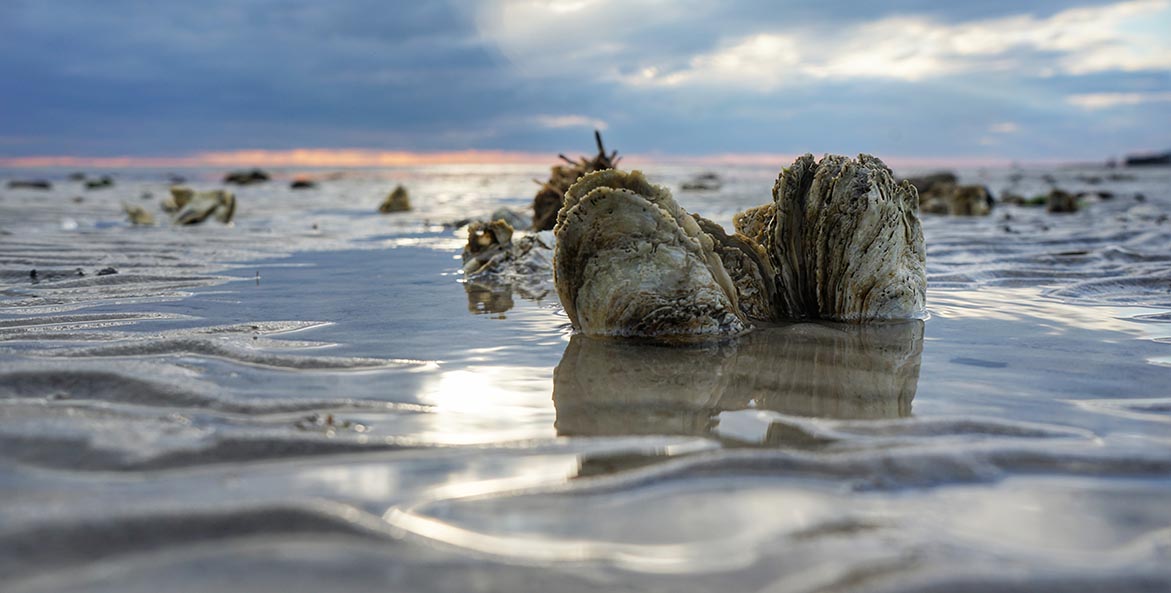Oysters are having a moment. Long beleaguered by pollution, historic overharvesting, disease, and habitat loss, things are looking up for the Chesapeake Bay’s beloved bivalve.
Federal and state partners are on track to fully restore oyster habitat in 11 Bay tributary rivers by 2025, making the Bay home to the world’s largest oyster restoration project. Monitoring of the reefs so far is showing incredible success, with oyster population density in several rivers exceeding the restoration targets. In Harris Creek on Maryland’s Eastern Shore, the restored reef is now capable of filtering an equivalent of the entire volume of the creek every 10 days during the summer months and removing 1 million pounds of nitrogen over a decade. There have also been promising trends in oyster reproduction in both Maryland and Virginia over the last several years, alongside a decade of below-average mortality from oyster diseases.
But there’s much more to do. It’s a critical time to build on the current momentum and fully embrace the myriad benefits a restored oyster population would provide, according to a new report released by CBF on February 15. The report, Hope on the Half Shell: Harnessing oysters to build ecological and community resilience, outlines what needs to happen next to restore oyster populations to not only improve water quality and fish habitat, but also to increase climate resilience, grow economic opportunity, and provide many other benefits for the watershed’s people and environment. Here are four big takeaways:
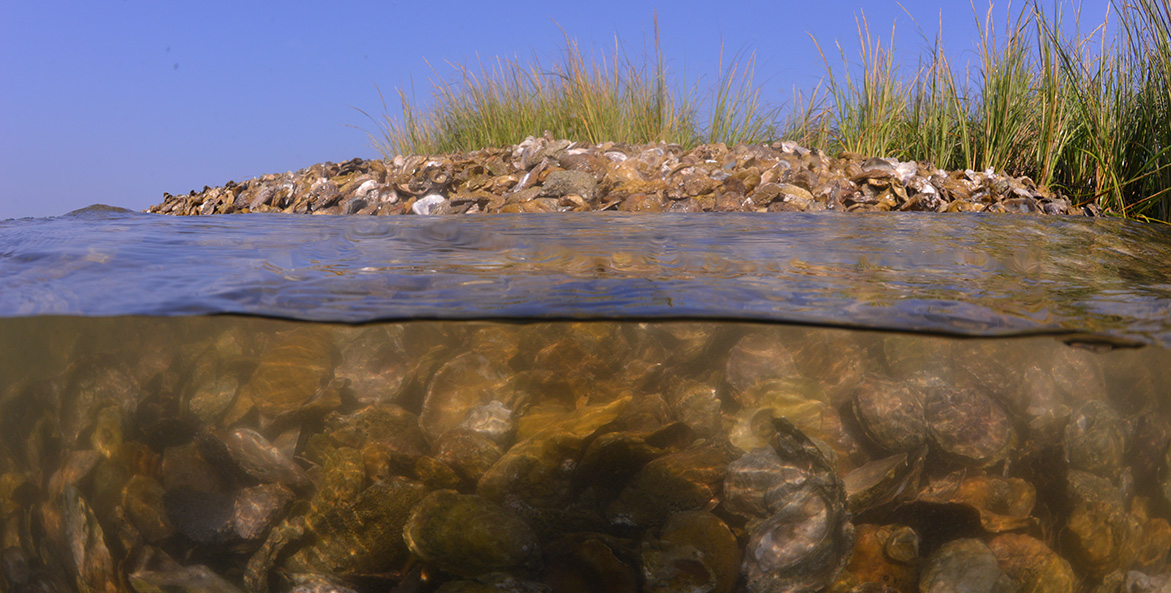
Increasing the number of large-scale oyster reef restoration projects, such as those in Virginia's Lafayette and Lynnhaven rivers, can have a significant impact on water quality, the surrounding ecosystems, and the impacts of climate change.
Nick Caloyianis
- Accelerating the pace and scale of large-scale oyster restoration projects is needed now.
Oysters are the bedrock of the Chesapeake Bay. Oyster reefs provide food and shelter to more than 300 other species of fish and invertebrates, and prior to the 19th century, the population could filter the entire volume of water in the Bay in a matter of days. With oyster restoration expertise and experience now in place and significant resources available, the report calls on Maryland and Virginia to build on this success to restore an additional 20 tributaries by 2035.
Studies of large-scale oyster reef restoration projects in the Chesapeake Bay since 2014 found that the recovering reefs have provided many benefits to the surrounding ecosystem—including the removal of nitrogen and the creation of habitat for an increased diversity and abundance of aquatic life. Maintaining the health of oyster reefs in the initial 11 tributaries will therefore also be important moving forward.
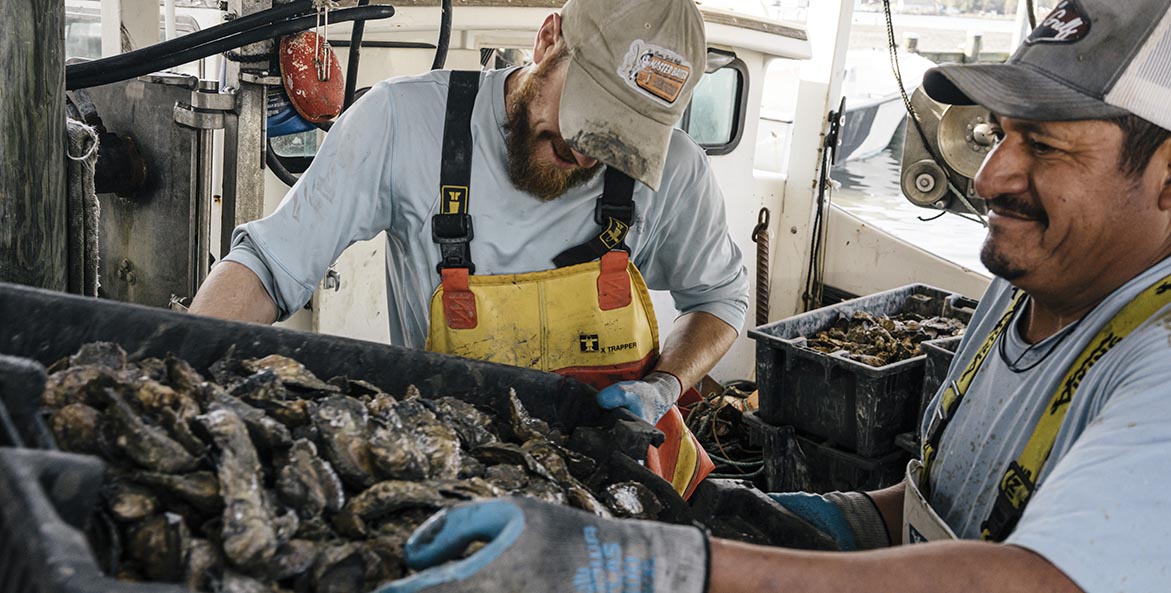
Oyster farming provides jobs in coastal areas and statewide economic benefits.
Greg Kahn
- Expanding restoration and aquaculture can grow equitable economic opportunities for coastal communities.
Oysters alone brought in more than $56.8 million in revenue in Maryland and Virginia in 2022, and their reefs are the foundation of many other commercially and recreationally important species. Restoring the Bay’s oyster population and oyster reefs is therefore a critical part of supporting these fisheries and preserving the industries and jobs that depend on them. For example, in 2019, researchers at Morgan State University estimated that oyster reef restoration in the Chesapeake Bay would lead to a $10 million increase in commercial fishing revenues annually, driving regional sales of $20 million as the dollars are re-spent, due to significant increases in harvests of blue crabs and species like white perch. It can also directly create jobs in restoration work.
Expanding oyster aquaculture is also a key component of growing economic opportunities. The report calls on states to do more to support the equitable growth of this industry by reducing regulatory hurdles; improving access to capital, waterfront property, and technical support; investing in workforce development and hatchery infrastructure; and addressing legacy discrimination.
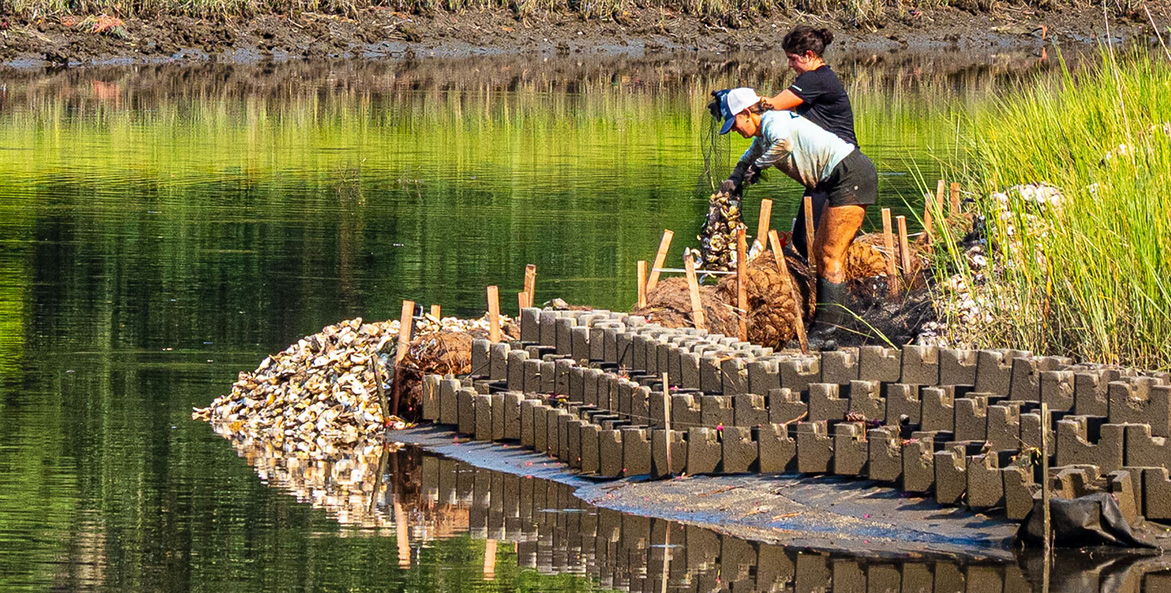
Oyster shell is used for shoreline protection projects, like this living shoreline, which not only will help reduce erosion and flooding but ultimately create healthy habitats.
Sue Mangan
- Oysters can help protect against sea-level rise and storm surge and should be integrated into climate change solutions.
The Chesapeake Bay region is ground zero for the impacts of climate change. Sea level rise, subsidence, increased storm activity, higher air and water temperatures—all are placing our communities and the Bay ecosystem at risk. In fact, rising seas are expected to put at risk more than 110,500 homes in Maryland and Virginia, worth $34 billion, by 2100.
Oysters once played an important role in protecting the Bay’s shorelines and marshes from erosion, sea-level rise, and intense storms. By increasing the use of oysters and oyster habitat in shoreline protections and restoration, they can do so again. In addition, oyster restoration can help protect the coastal habitats that capture and store carbon. Saltmarshes and seagrasses are among some of the most powerful carbon “sinks” in the world, with the ability to store more carbon per unit area than a forest. The report calls for actions that will leverage oysters’ ability to both build resilience to climate change and to mitigate the greenhouse gas emissions that drive climate change.
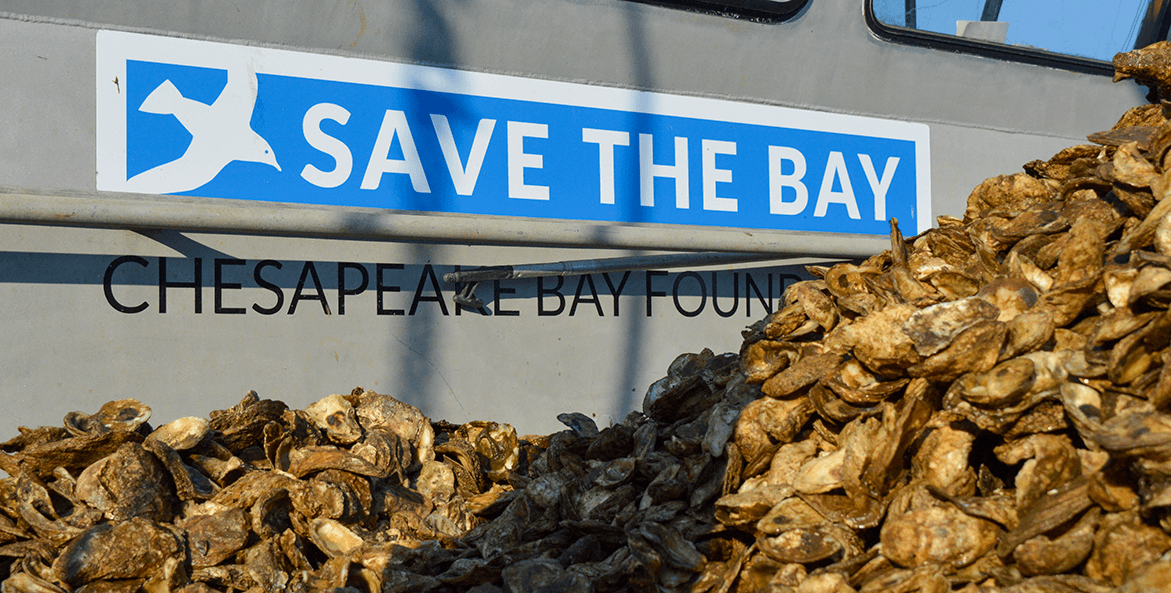
Spat on shell oyster sit aboard the Patricia Campbell before being planted on Maryland's Tred Avon River.
Rebecca Long
- Modernizing fishery management and ensuring transparency and accountability is critical for the oyster population’s long-term recovery.
Despite incredible gains in the understanding of oysters, their ecology, and fisheries science since the turn of the 20th century, many of the same management approaches are still used to manage the fishery today. Moreover, oysters are still a fraction of their historical population.
To prevent boom and bust cycles and increase oyster populations long-term, the report calls for fishery managers to use the most up-to-date scientific information and methods, including: initiating an oyster stock assessment in Virginia; implementing harvest quotas; considering spatial variables in management; and electronic harvest reporting. It also highlights the need to manage oyster shell alongside oyster populations; shell is necessary to form the substrate upon which juvenile oysters attach and grow, which in turn sustains oyster populations and their reef habitat. Finally, the report notes the need to re-center science and improve transparency in decision-making to rebuild trust in fishery managers and agencies.
The Time to Act Is Now
The Bay partnership is moving into the next chapter of oyster restoration. Given the current momentum and expertise gained through large-scale oyster restoration projects and the urgency of climate change and state climate goals, now is a crucial moment to accelerate the recovery of oysters in the Bay. Oysters have shaped the history, culture, and wellbeing of the Bay and its communities for centuries. The report underscores that, with our help, they can also play a critical role in shaping the region’s future.

